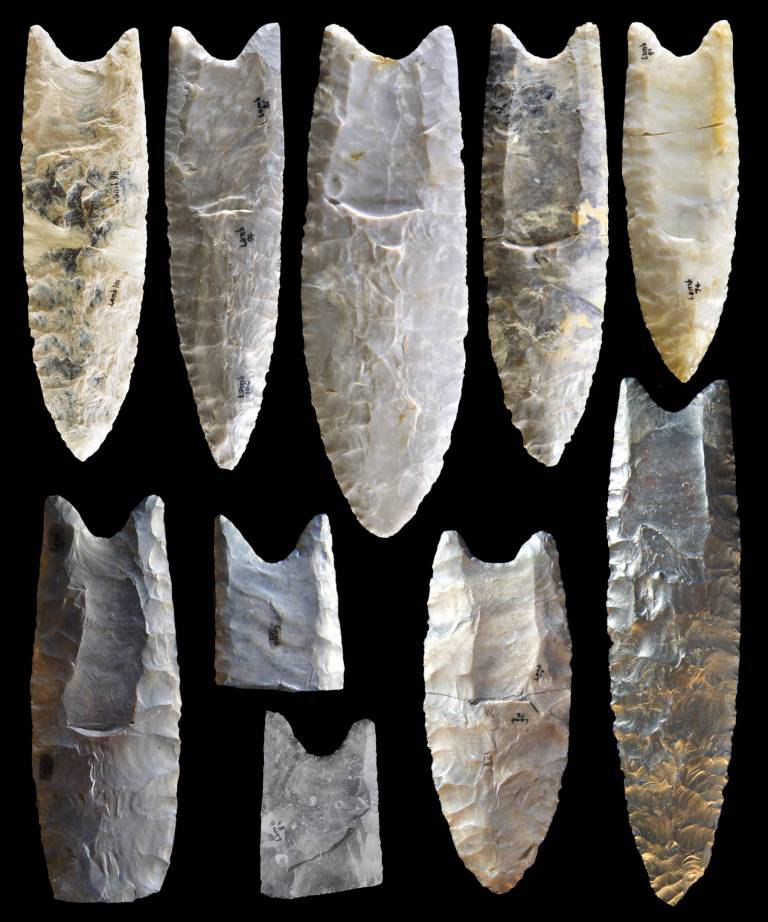Evidence suggests the base of Clovis fluted-points acted as "shock-absorbers" in the crafting of this iconic tool
20 April 2017
Clovis groups, the first widely successful colonisers of North America, had a distinctive technology, whereby manufacturers removed flakes to thin the bases of their stone projectile points, creating "flutes.
 " That process is challenging to learn and costly to implement, yet was used continent-wide. It has long been debated whether fluting conferred any adaptive benefit. We compared standardized models of fluted and unfluted points: analytically, by way of static, linear finite element modeling and discrete, deteriorating spring modeling; and experimentally, by way of displacement-controlled axial-compression tests. We found evidence that the fluted-point base acts as a "shock absorber," increasing point robustness and ability to withstand physical stress via stress redistribution and damage relocation. This structural gain in point resilience would have provided a selective advantage to foragers on a largely unfamiliar landscape, who were ranging far from known stone sources and in need of longer-lasting, reliable, and maintainable weaponry.
" That process is challenging to learn and costly to implement, yet was used continent-wide. It has long been debated whether fluting conferred any adaptive benefit. We compared standardized models of fluted and unfluted points: analytically, by way of static, linear finite element modeling and discrete, deteriorating spring modeling; and experimentally, by way of displacement-controlled axial-compression tests. We found evidence that the fluted-point base acts as a "shock absorber," increasing point robustness and ability to withstand physical stress via stress redistribution and damage relocation. This structural gain in point resilience would have provided a selective advantage to foragers on a largely unfamiliar landscape, who were ranging far from known stone sources and in need of longer-lasting, reliable, and maintainable weaponry.
Explaining the origin of fluting in North American Pleistocene weaponry
Kaitlyn A. Thomas, Brett A. Story, Metin I. Eren, Briggs Buchanan, Brian N. Andrews, Michael J. O'Brien, David J. Meltzer
DOI: 10.1016/j.jas.2017.03.004
 Close
Close

